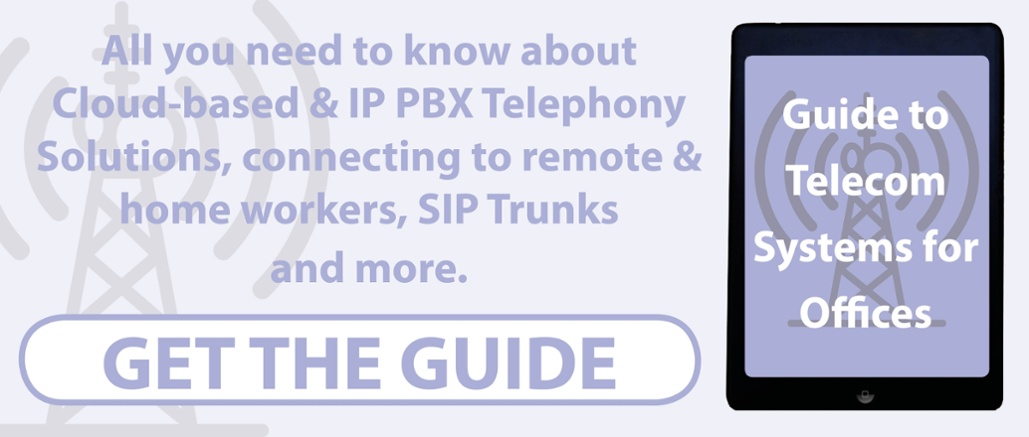
Relocating to new offices means being prepared and creating as little disruption to your usual services as you possibly can.
Small and medium enterprises (SMEs) across counties like Buckinghamshire, Oxfordshire and Berkshire can carry on trading from offices which they have outgrown sometimes for no better reason than the owners worry about disruption to usual business practices. Of course, customers can feel like your business is not truly focussed on their needs when you go through the process of moving. However, growing businesses do need more space and you'll end up failing customers more if you continue to try and operate from premises which you have outgrown. At the other end of the scale, downsizing to smaller offices may be appropriate if your business needs to reduce its outgoings. Either way, the key is to be prepared with your communications even if other business operations take a while to bed in.
Without proper communications, you stand no chance of explaining to clients and suppliers why any disruption may be temporary. Most people will live with a blip in normal service but will walk away if they think something is wrong. Only good communications will help you to get relocating right so far as your customers are concerned. Other than finding suitable premises, centring your attention on communications should be your number one priority when moving.
Postal Communications
All businesses receive official paperwork by the post service, no matter how much they have digitised their operations. Inform customers, the council, suppliers and third-parties of your new trading address the minute you know it. Inevitably, some paper communications will end up at your old address, however. Royal Mail will capture any post that is intended for your enterprise and forward it to you. They need at least five working days notification in advance of your relocation date to set this up. SME owners can opt for forwarding to run on a three-month, a six-month or an annual basis.
Telecommunications
Moving office means something needs to happen with the telecoms solution. Many moves will happen over the weekend to give the business a couple of extra days when the office is closed to get things set up and implemented in the new office. Ideally the move needs to be seamless without customers really knowing an upheaval has taken place. Internally, you want staff to pack up their desk Friday afternoon and come Monday morning, continue to work as usual albeit from another office. Key to achieving this is in the planning and you certainly don’t want to leave it to the last minute.
In saying all that, however, some telecom solutions require less work than others. For instance, if you currently have cloud or hosted based solution there is far less to worry about providing the data communications is set up properly (which we mention in the next section), the IT network is in place and staff take their IP Handset with them in the move.
For businesses that have ISDN circuits and PBX telephone systems, more planning is required. ISDN2 circuits normally take at least 2 weeks to install and ISDN30 circuits up to 30 days. Most companies want to keep their number range which is possible if the business is moving to the same BT exchange area – otherwise the business will need to port their number range to the cloud and install SIP Trunks rather than ISDN circuits.
SIP Trunks are merely an alternative and replacement service to ISDN; and as BT plan to discontinue their ISDN network in 2025, it makes more sense for businesses to set up SIP Trunks in the new office as they cost less to install, rent and utilize.
Implementing SIP Trunks does not mean that you need to throw your telephone system in the bin if it is fairly new, however it may require an upgrade or licences to support SIP Trunks. SIP Trunks can be set up almost instantly, however are delivered over broadband or ethernet circuits, which need to be in place prior to the move. You’ll also need to book your PBX provider to help move your telephone system and re-install it in the new office.
This can all be a fairly daunting process to be in charge of if you have never done it before, especially if you have different providers for all your services and you are the one co-ordinating all the different activities. Therefore, it is best to start the process early so you have time to rectify any unexpected surprises.
Data Communications
Many types of SME rely on data communications systems to help them operate at all. In the past, you might have needed a dedicated fax line to communicate with clients, other than by phone, and little more. However, these days most businesses won't cope for long without internet access. Therefore, it is essential that you ensure that your new premises is internet-ready. A telecommunications consultant should be able to advise you of what you need to know. Managed offices, for example, are likely to have sufficient broadband for you to move in immediately. In privately rented offices, you will need to order your broadband connections in advance of moving, so that they are ready to run on day one following your relocation.
Of course, mobile data networks can sometimes bridge the gap between having moved and your broadband being put in place by the network provider in the area. If so, you'll need to make sure that coverage is good enough at the new office and that you won't be transmitting and receiving so much data that the mobile network cannot cope with demand. Whether or not you can get away with a temporary measure for your data communications needs will vary depending on what sort of business you run. Customers who access your services via your own servers will need 24/7 connections. On the other hand, if all you use the internet for is to send and receive a few emails, then mobile connections might be sufficient in the short term.





